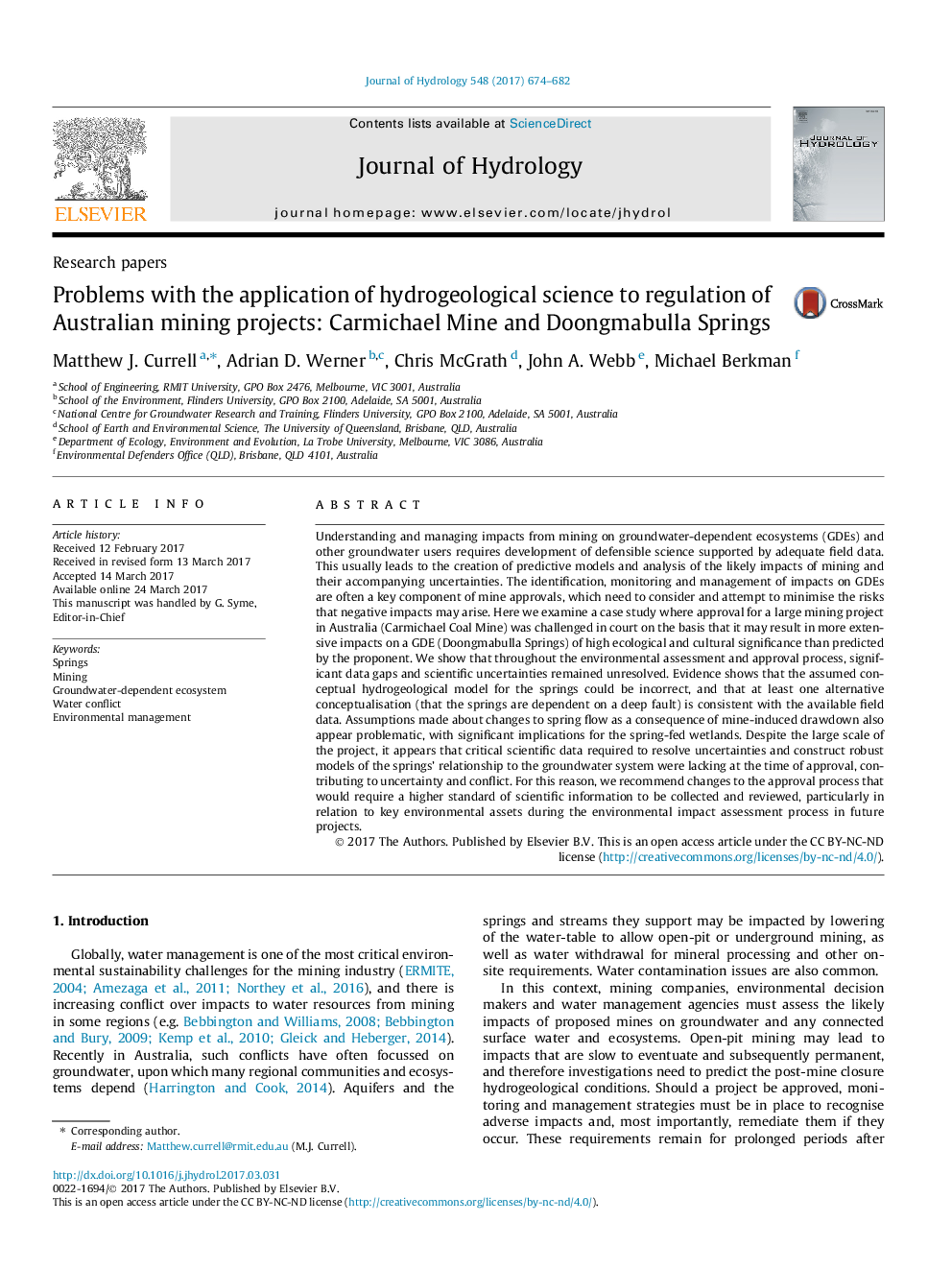| کد مقاله | کد نشریه | سال انتشار | مقاله انگلیسی | نسخه تمام متن |
|---|---|---|---|---|
| 5771258 | 1629906 | 2017 | 9 صفحه PDF | دانلود رایگان |

- Case study reveals problems in way hydrological science applied in mine approvals.
- Water-related conflict exacerbated by unresolved scientific uncertainties.
- Greater focus on upfront data collection may reduce future water-related conflicts.
Understanding and managing impacts from mining on groundwater-dependent ecosystems (GDEs) and other groundwater users requires development of defensible science supported by adequate field data. This usually leads to the creation of predictive models and analysis of the likely impacts of mining and their accompanying uncertainties. The identification, monitoring and management of impacts on GDEs are often a key component of mine approvals, which need to consider and attempt to minimise the risks that negative impacts may arise. Here we examine a case study where approval for a large mining project in Australia (Carmichael Coal Mine) was challenged in court on the basis that it may result in more extensive impacts on a GDE (Doongmabulla Springs) of high ecological and cultural significance than predicted by the proponent. We show that throughout the environmental assessment and approval process, significant data gaps and scientific uncertainties remained unresolved. Evidence shows that the assumed conceptual hydrogeological model for the springs could be incorrect, and that at least one alternative conceptualisation (that the springs are dependent on a deep fault) is consistent with the available field data. Assumptions made about changes to spring flow as a consequence of mine-induced drawdown also appear problematic, with significant implications for the spring-fed wetlands. Despite the large scale of the project, it appears that critical scientific data required to resolve uncertainties and construct robust models of the springs' relationship to the groundwater system were lacking at the time of approval, contributing to uncertainty and conflict. For this reason, we recommend changes to the approval process that would require a higher standard of scientific information to be collected and reviewed, particularly in relation to key environmental assets during the environmental impact assessment process in future projects.
Journal: Journal of Hydrology - Volume 548, May 2017, Pages 674-682